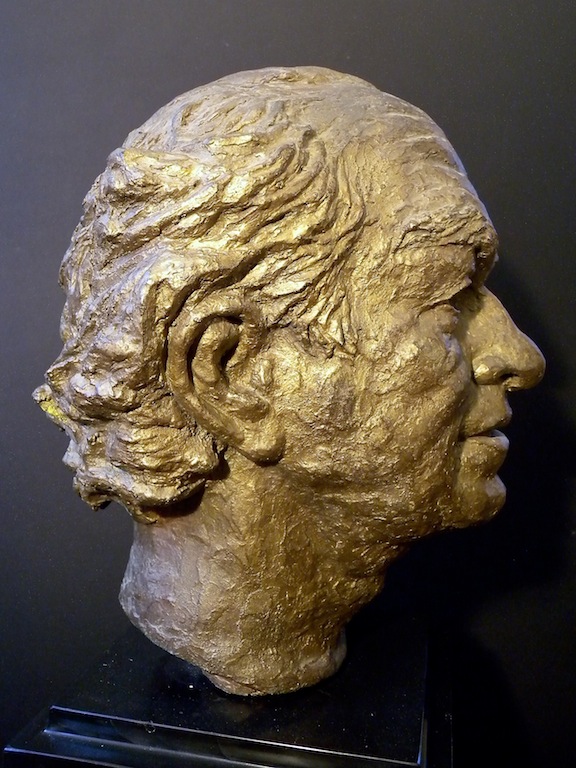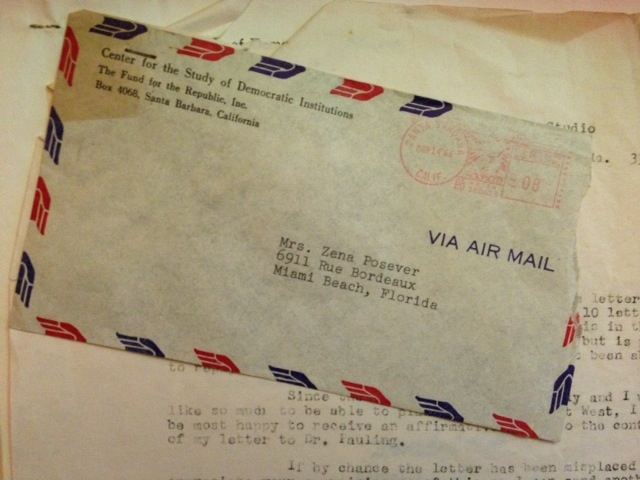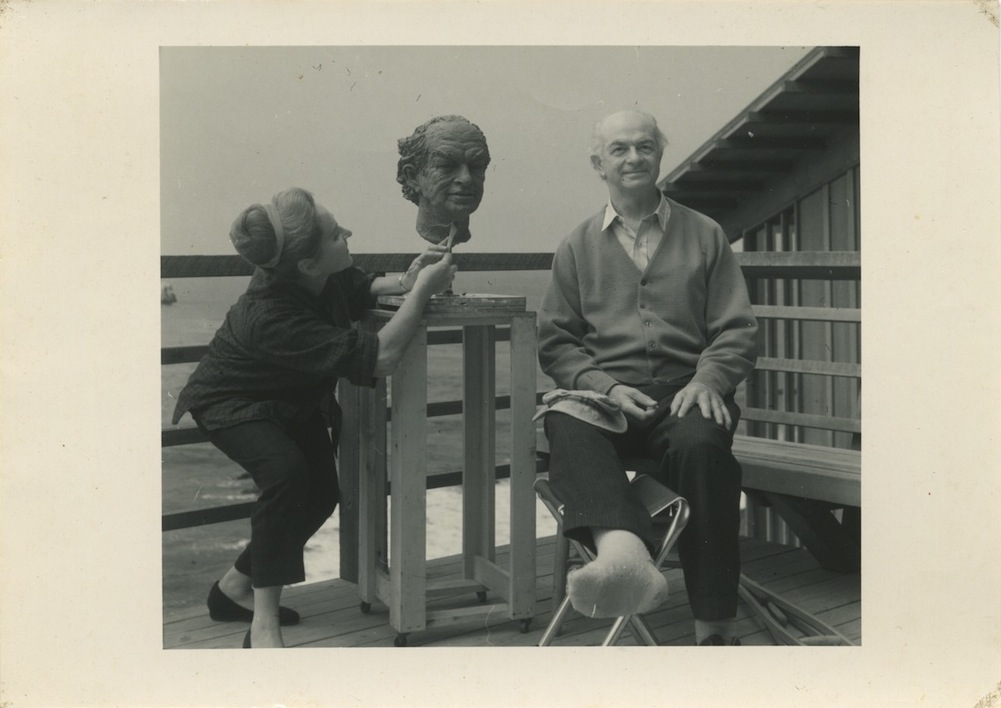

Shortly after the unveiling of Zena's bronze of Scott Nearing in 1963, he did her the favor of an introduction to his friend, Linus Pauling. For the three of them – economist Nearing, chemist Pauling and artist Zena -- who had lived through the increasing horrors of two world wars and the threat of nuclear war in the Atomic Age, the peace movement was an essential calling. Nearing wrote his commendation of Zena six short weeks after the October 10th announcement of Pauling’s Nobel Peace Prize. It was the same day that the test ban treaty between the United States, Great Britain, and the Soviet Union, the world’s only nuclear powers, went into effect.

Linus Pauling, Patinated Plaster, 1966
Zena aspired to create a remembrance hall for the greatest contributors to American society, supported by the civic-minded Miami Beach Library Forum (modeled after Boston’s venerable Ford Hall Forum, a lecture series for informing a democratic citizenry). The distinguished Linus Pauling, the only winner of two unshared Nobel Prizes in Chemistry (1954) and Peace (1962), was for her the most natural candidate. Pauling in his dedicated efforts for health and peace was an indefatigable public advocate for limiting nuclear weapons and banning their testing in the atmosphere.

Correspondence 1964-66
While she was teaching art at Miami-Dade College, Zena persisted for over a year and a half in writing to Pauling about arranging a portrait sitting. Pauling had just left his 42-year affiliation with Caltech and become Research Professor in the Physical and Biological Sciences at the Center for the Study of Democratic Institutions, the Santa Barbara think tank.
The Making of the Portrait
Undaunted by 3,000 miles and many letters about scheduling, Zena traveled cross-country in the summer of 1966 to meet him at his new ranch on the Big Sur, California coast.
When Zena arrived in August, Linus had his leg in a cast. He had broken it on one of his hiking treks up the craggy hills. The misfortune, in Zena’s words, “proved to be a lucky stroke for the sitting.” The normally active scientist, while not given to small talk, became a perfectly willing model. Zena saw the scientist’s “rather austere countenance soon [become] wreathed in smiles.” Moreover, Pauling’s cousin, an art student who was visiting, helped her make the initial mold for the clay portrait’s plaster cast. It had taken only three weekends to complete.

Zena and Linus Pauling with leg in cast, 1966
Zena was a master at patination, the chemical process for coloring plaster to resemble bronze. The portrait in patinated plaster remained in Zena’s studio because the Forum project never materialized. Her expressionistic likeness of Linus Pauling has yet to be installed in a permanent home.